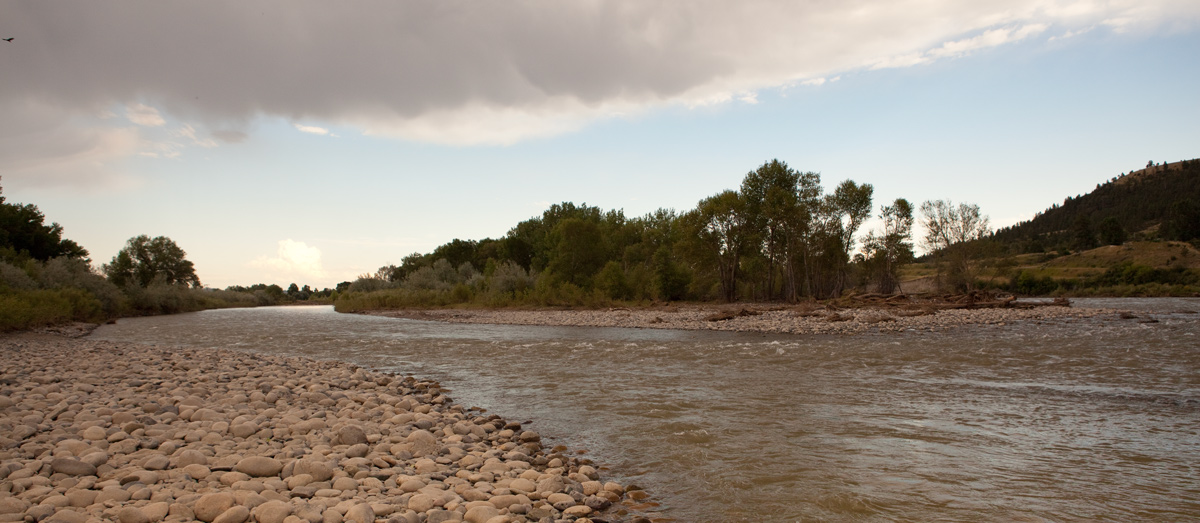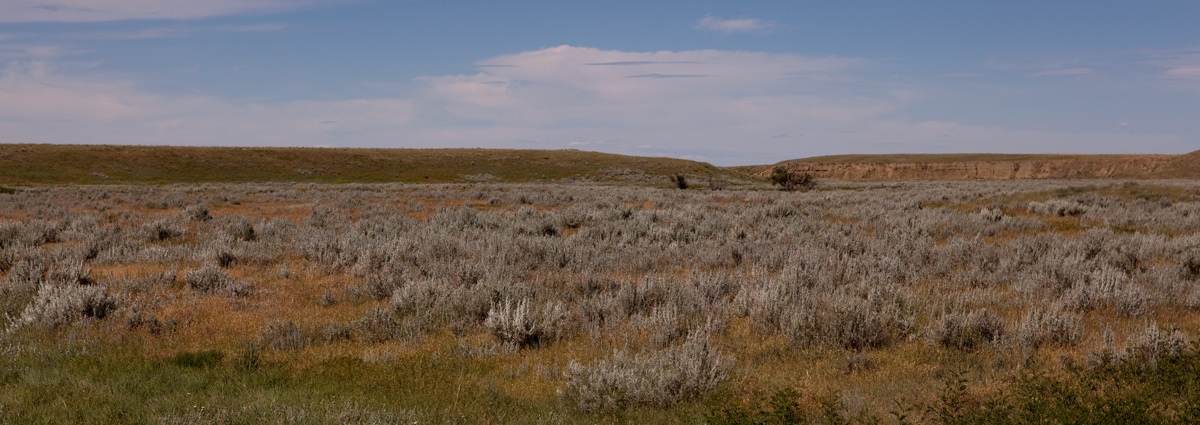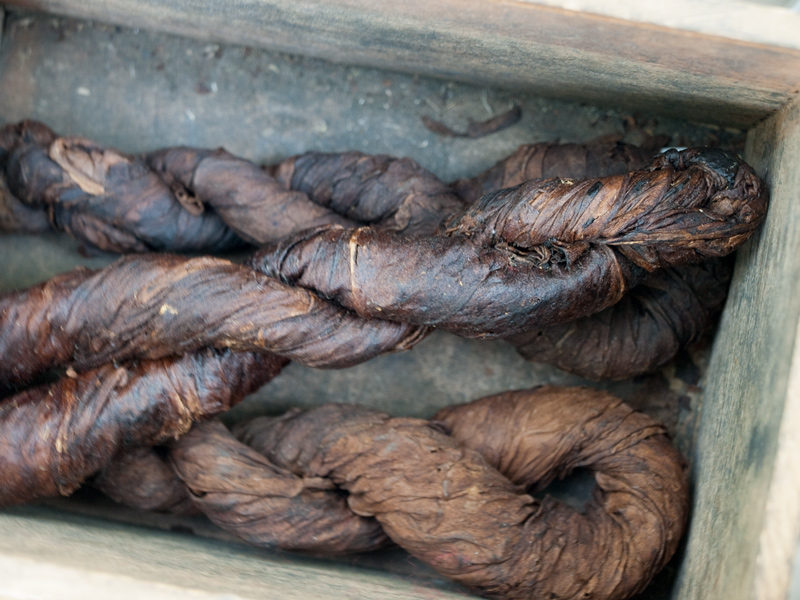Moving down the Yellowstone River, Charbonneau is thrown from his horse and Pvt. Gibson seriously wounds his thigh. They see distant smoke signals, and Clark suspects that some Crows have discovered them.
Lewis and his small group reach the Marias River via Dugout Coulee. They see one continual herd of bison for 12 miles, and each person takes a turn at guard duty during the night.
Sgt. Gass and three men travel to the Lower Portage Camp where they take some tobacco from a cache. Sgt. Ordway and nine men paddle down the Missouri nearly reaching the Great Falls of the Missouri.[1]For more on the captains’ strategy and various groups after leaving Travelers’ Rest, see Dividing Forces at Travelers’ Rest.
Immense Herds of Buffalo
by Yellowstone Public Radio[2]Originally aired weekdays by Yellowstone Public Radio during the Bicentennial observance of 2003-2006. Narrated by Hal Hansen. Scripts by Whit Hansen and Ed Jacobson. Produced by Leni Holliman. © … Continue reading
Clark Sees Smoke Signals
Yellowstone River Evening
Columbus, Montana, 26 July 2011. © by Kristopher K. Townsend. Permission to use granted under the Creative Commons Attribution-Share Alike 4.0 International license.
Charbonneau Thrown
Shabono [Charbonneau] was thrown from his horse to day in pursute of a Buffaloe, the hose unfortunately Steping into a Braroe [badger] hole fell and threw him over his head. he is a good deel brused on his hip Sholder & face.
—William Clark
Tasty Currants
crossed a Small Muddy brook on which I found great quantities of the Purple, yellow & black currents ripe. they were of an excellent flavour.
—William Clark
Crow Smoke Signals
at 11 A. M. I observed a Smoke rise to the S. S. E in the plains towards the termonation of the rocky mountains in that direction (which is Covered with Snow) this Smoke must be raisd. by the Crow Indians in that direction as a Signal for us, or other bands. I think it most probable that they have discovered our trail
—William Clark
Gibson Wounds Thigh
Gibson in attempting to mount his horse after Shooting a deer this evening fell and on a Snag and sent it nearly [Nicholas Biddle: two] inches into the Muskeler part of his thy. he informs me this Snag was about 1 inch in diamuter burnt at the end. this is a very bad wound and pains him exceedingly. I dressed the wound.
—William Clark
Weather Diary (Clark)
State of the weather at Sun rise Wind at Sun rise State of the weather at 4 P. M Wind at 4 P M. fair S W fair S E yellow, purple, & black Currents ripe and abundant
—William Clark[3]To assist the reader of this web page, the date column is omitted and some abbreviations have been spelled out.
Lewis Reaches the Marias
Dugout Coulee
© 21 July 2011 by Kristopher K. Townsend. Permission to use granted under the Creative Commons Attribution-Share Alike 4.0 International license.
at noon we struck this creek about 6 ms. from its junction with Maria’s river where we found some cottonwood timber; here we halted to dine and graize our horses. the bed of this creek is about 25 yds. wide at this place but is nearly dry at present, the water being confined to little pools in the deeper parts of it’s bed.
—Meriwether Lewis
Twelve Miles of Buffalo
we passed immence herds of buffaloe on our way in short for about 12 miles it appeared as one herd only the whole plains and vally of this creek being covered with them;
—Meriwether Lewis
Marias River Encampment
after dinner we proceeded about 5 miles across the plain to Maria’s river where we arrived at 6 P. M. we killed a couple of buffaloe in the bottom of this river and encamped on it’s west side in a grove of cottonwood . . . . I keep a strict lookout every night, I take my tour of watch with the men.
—Meriwether Lewis
Weather Diary
State of the weather at rise
Wind at rise
State of the weather at 4 P. M. Wind at 4 P. M. fair S W fair N E —Meriwether Lewis
Tobacco
Historical interpretation by John Fisher. Photo © 2010 by Kristopher K. Townsend. Permission to use granted under the Creative Commons Attribution-Share Alike 4.0 International license.
Gass Opens a Cache
There was another plesant day, and I went down with three of the men to the lower end of the portage to examine the periogue and deposit there, and found all safe. We took some tobacco out of the deposit, covered up all again, until the party should arrive with the canoes, and returned to camp.
—Patrick Gass
Ordway Nears the Falls
A Gentle Current
we set off as usal and proceeded on down the gentle current . . . . towards evening we passed the mouth of Smiths River a Short distance below Some of the hunters went out after some gangues of buffaloe and we Camped it being late
—John Ordway
Bites Cause Swelling
the Musquetoes and Small flyes are verry troublesome. my face and eyes are Swelled by the poison of those insects which bite verry Severe indeed.
—John Ordway
Experience the Lewis and Clark Trail
The Lewis and Clark Trail Experience—our sister site at lewisandclark.travel—connects the world to people and places on the Lewis and Clark Trail.
Plan a trip related to July 18, 1806:
- Tiber Dam on the Marias (Lewis)
- Bear Paw Battlefield (Lewis)
- Billings, Montana (Clark)
- Three Forks to Billings Driving Tour (Clark)
- Lower Portage Staging Area (Gass)
- First Peoples Buffalo Jump State Park (Ordway)

The Great Falls Portage is a High Potential Historic Site along the Lewis and Clark National Historic Trail managed by the U.S. National Park Service. It includes Sulphur Springs (open to the public) and Lower Portage camp site (private land), and the Upper Portage Camp Overlook.
Notes
| ↑1 | For more on the captains’ strategy and various groups after leaving Travelers’ Rest, see Dividing Forces at Travelers’ Rest. |
|---|---|
| ↑2 | Originally aired weekdays by Yellowstone Public Radio during the Bicentennial observance of 2003-2006. Narrated by Hal Hansen. Scripts by Whit Hansen and Ed Jacobson. Produced by Leni Holliman. © 2003 by Yellowstone Public Radio. |
| ↑3 | To assist the reader of this web page, the date column is omitted and some abbreviations have been spelled out. |





